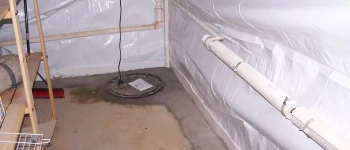You may not know this, but the unsung hero of a dry, comfortable basement is often a sump pump. When water levels start to rise in your home’s lowest point, the sump pump springs into action, siphoning away the excess to prevent any potential damage. Think about it, how many times have you worried about mold, structural issues, or simply losing valuable storage space to water damage? Now consider the peace of mind a sump pump could bring. There’s more to this essential piece of equipment than meets the eye, wouldn’t you agree?
Understanding the Sump Pump Function
Imagine a rainy day where water relentlessly seeps into your basement, turning it into an indoor pool. Not a pretty sight, right? This is where a sump pump comes in handy. But what’s it, and how does it work?
In the simplest of terms, a sump pump is your basement’s lifesaver. Its main function is to remove excess water from your basement, preventing it from turning into an indoor pool.
Usually installed in a sump pit located at the lowest point of your basement, it’s designed to detect when water levels rise above a certain point. When that happens, it’s game time for the sump pump.
The pump is activated, and it starts to suck up the water through its intake, then pushes it out through a discharge pipe. The water is redirected away from your house to a place where it won’t cause you any problems, like a municipal storm drain or a dry well.
It’s a simple but effective process that’s designed to keep your basement dry and protect your home from water damage.
Types of Sump Pumps Explained
Diving into the world of sump pumps, you’ll find there are two main types: pedestal and submersible. Each type has its own strengths and weaknesses, and the perfect fit for your home largely depends on the specific requirements of your basement.
Starting with pedestal pumps, they’re quite robust and long-lasting, typically providing up to 25-30 years of service. They’re mounted above the sump pit, which makes them easier to service and maintain. However, these pumps can be noisy and less effective at handling larger volumes of water.
On the other hand, submersible pumps are quieter and more efficient at pumping out water. They’re sealed and placed directly in the sump pit, which means they can handle more water and larger debris without clogging.
That being said, their lifespan is usually shorter, around 5-15 years, and they can be more difficult to service due to their submerged location.
Between these two, you’ll have to make a choice based on your specific needs. Consider factors like the volume of water, the size of your sump pit, the noise level you can tolerate, and the maintenance you’re willing to undertake.
Installation Process for Sump Pumps
In order to install a sump pump, you’ll first need to determine the ideal location in your basement. This is typically the lowest point, where water accumulates most frequently.
Once you’ve pinpointed the appropriate spot, you’ll dig a hole deep and wide enough to accommodate your sump basin.
After placing the basin in the hole, you’ll need to install a check valve on the discharge pipe. This prevents water from flowing back into the basin once the pump switches off.
You’ll then connect the discharge pipe to the pump. It’s essential to guarantee this pipe leads safely outside, away from your home’s foundation.
Next, you’ll place the pump in the basin, making sure it’s level.
Connect the pump to a Ground Fault Circuit Interrupter outlet—this vital safety feature prevents electrical shocks.
Routine Maintenance of Sump Pumps
Maintaining your sump pump regularly can make a world of difference in its performance and longevity.
It’s not just about ensuring it’s working, but also maximizing your investment.
Firstly, always disconnect the pump from the power source before performing any maintenance. Safety first!
Then, check the pump for debris. Leaves, small stones, or other detritus can block the intake screen, reducing the pump’s efficiency. Clean it out if necessary.
Next, test the pump. Fill the sump pit with water and watch the float rise. As it reaches its set point, the pump should turn on and begin evacuating water. If it doesn’t, you might need to adjust the float switch.
Don’t forget about the discharge line. Make sure it’s clear of any blockages, and that water can flow freely out of your basement.
Common Sump Pump Problems
Despite all your efforts to maintain it, your sump pump might still run into issues from time to time. Some problems are common and can happen to any sump pump, no matter how well you take care of it.
Firstly, the pump may simply fail to start or run. This could be due to a power issue, a stuck switch, or even a faulty motor.
In addition, you might find your pump running non-stop, an issue that can stem from a stuck float switch, a too small or overwhelmed sump pit, or an incorrectly sized pump.
Thirdly, a noisy sump pump is another common problem you might encounter. The noise could be caused by a damaged impeller, a failing motor or even from cavitation — a phenomenon that occurs when the pump runs too fast.
Lastly, a common problem is a sump pump that’s unable to evacuate water efficiently. This could be due to a clogged or frozen discharge line, or a check valve issue.
Solutions for Sump Pump Issues
Without the right troubleshooting, your sump pump problems can escalate quickly.
So, let’s explore some practical solutions to common sump pump issues.
If you’re dealing with a sump pump that’s not turning on, the issue could be a faulty float switch. Check if it’s stuck or if it’s not rising with the water level. A simple adjustment or replacement can get it running again.
If the pump is running but not removing water, you might be facing a clogged or frozen discharge line. Clearing the line or insulating it against freezing conditions can solve the problem.
In case your sump pump runs continuously, it could be due to an incorrectly sized pump or a faulty switch. You might need to install a larger pump or replace the switch.
Remember, a professional plumber can provide the best advice here.
Finally, for a noisy sump pump, you could be looking at a damaged impeller or a lack of sufficient water. You might need to replace the impeller or add more water to the pit.
Always remember, regular maintenance is your best defense against sump pump issues.
Benefits of Having a Sump Pump
There are countless benefits to having a sump pump installed in your home. Initially, it’s your first line of defense against basement flooding. If you live in an area where heavy rain or snowfall is common, you’ll appreciate the peace of mind it provides. The sump pump automatically kicks in when water levels rise, diverting water away from your home’s foundation.
Secondly, it helps to prevent mold and mildew. These fungi thrive in damp environments and can lead to health problems. By keeping your basement dry, a sump pump cuts off their life source. You’re not just protecting your home’s structure, but also your family’s health.
Thirdly, a sump pump can boost your property value. A dry basement is a big selling point for potential home buyers. It shows you’ve taken preventative measures and maintained your home well.
Lastly, it saves you money in the long run. Think about it: the cost of a sump pump installation is a fraction of what you’d spend repairing water damage, replacing possessions, or addressing health issues from mold exposure. It’s an investment that’s well worth it.
Just like a lifeguard, your sump pump is always on guard, ensuring your basement remains dry and damage-free. But, don’t forget, even lifesavers need a little TLC. Regular maintenance and swift action on issues can keep it running smoothly. Remember, a well-functioning sump pump isn’t just a useful tool, it’s your home’s unsung hero, protecting your sanctuary from the tides of potential disaster.


